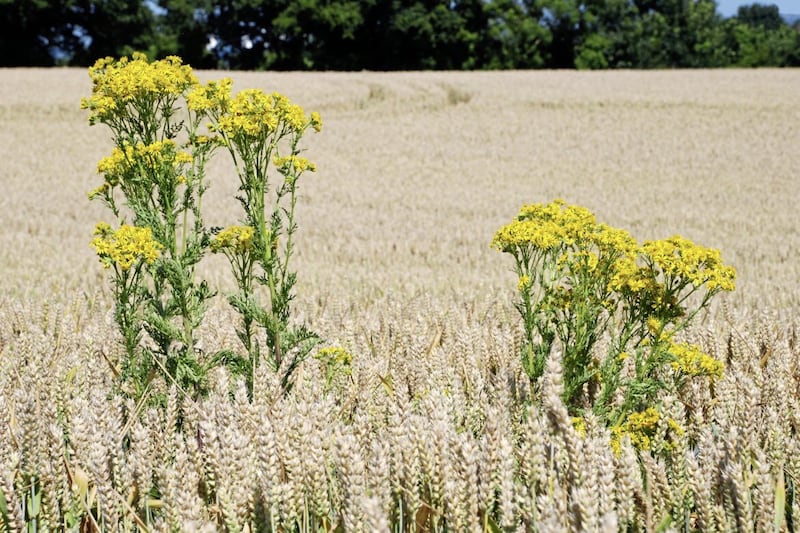While the term itself derives providentially enough, it might be argued, from the name of a pre-Christian Germanic goddess and her spring festival, 'Easter' marks in the Church's calendar the resurrection of Jesus Christ from the dead on the first Easter Sunday.
Easter's connection with spring, despite the grim realities that characterised Jesus' Passion, might still for some bring to mind, not sombre ideas of suffering, but notions of flowers and plants emerging finally and slowly from hibernation, and of gardens coming back to life again.
In this light, it might be interesting to look at how the notion of 'gardens' plays an apparently key role in St John's interpretation of the Easter story.
The Gospel of John reports that after the last supper, on the first Holy Thursday, Jesus "left with his disciples and crossed the Kedron valley. There was a garden there, and he went into it with his disciples" (John 18:1). And there, in the garden of Gethsemane, identified by name only in the Gospels of Matthew and Mark, Jesus suffered his "agony in the garden" and was betrayed and arrested.
The Gospel of John also states that, "at the place where Jesus was crucified, there was a garden, and in the garden a new tomb, in which no-one had ever been laid" (John 19:41).
These references to gardens do not appear to be fortuitous, because they seem inevitably to call to mind another famous garden mentioned right at the very start of the Bible, the Garden of Eden, where the problems of the human race are said to have begun.
Adam and Eve, the Book of Genesis tells us, lived in the garden of paradise, but there, according to Scripture, things started to go wrong. Whereas in the garden where Jesus was betrayed and in the garden where he was buried after being crucified nearby, the process of redemption, the New Testament teaches, began.
The fact that salvation began in the garden where Jesus was arrested and in the garden where he was buried and rose from the dead, is surely an important hint from the biblical author that, for Christian belief, what went wrong in the first garden was made right in another one.
In other words, Jesus did not die in vain or accidentally, but his death, indeed his whole human history, had a purpose and a definite goal. The Church identified this goal very early on with the reversal or rectification or redress of humanity's wrong turning in Eden – in short, with the redemption of the world.
It's also, surely, helpful in this context to recall that the cross on which Jesus died is occasionally described in the New Testament as a tree. And that, in turn, seems to indicate that what went wrong with humanity's contact with the tree of the knowledge of good and evil in the Garden of Eden has, to the eyes of faith, been made right by our contact with the tree of the cross.
But throughout the history of the Church, it has also been emphasised that not only was the tree of the knowledge of good and evil to be found in the Garden of Eden; the tree of life also existed there. And even though the first human beings were driven out of paradise by sin, the tree of life itself was not thereby destroyed.

For Christian faith the cross has become the tree of life, on which Christ won the world's redemption through his sacrificial death. So, it's hardly surprising, if we follow the reasoning of St John the Evangelist, that Mary Magdalene, when she saw Jesus after the resurrection, should have thought – as the Gospel of John relates – that he was the gardener.
That wasn't an entirely wrong guess, for in fact Jesus, for Christianity, is the gardener of a new life. Just as a gardener makes it possible for the trees and flowers and hedges to grow and prosper, Jesus makes it possible for his followers to live and prosper in God's redeemed garden.
But this claim only makes sense if we believe that it is the same Christ through and for whom the world was created, who also redeemed the world through his life, death and resurrection.
And that implies in turn that life was not created by God just for its own sake, as it were, but that this earthly life exists in the first place in order to make it possible for us to have access to eternal life. And that then is one of the deepest reasons, perhaps the deepest reason of all, why we can believe that the life that God created is good, indeed very good, as was asserted early in the Book of Genesis.
The resurrection is, then, a new reality or a new beginning or a new creation that, so to speak, confirms and carries on the original creation. This new beginning is still our own new reality today, and it can accompany us throughout our lives and beyond.
Martin Henry, former lecturer in theology at St Patrick's College, Maynooth, is a priest of the diocese of Down and Connor








